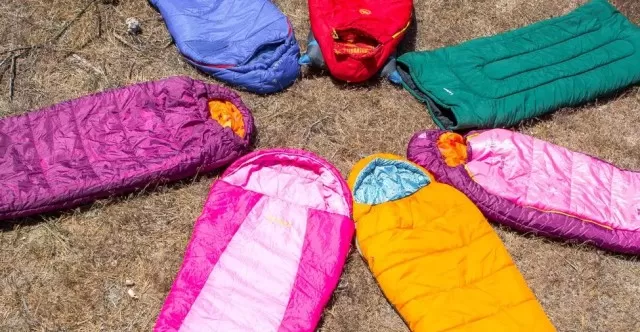Similar to other beds, it is necessary to clean the sleeping bag. The good news is that sleeping bags can be conveniently washed in the washing machine.

However, there are certain instructions to adhere to avoid any damage to the sleeping bag during the washing process.
This includes using an appropriate detergent based on the fill type of the sleeping bag and allowing sufficient time for the task. It is crucial to note that drying the sleeping bag may take a considerable amount of time, ranging from a few hours to overnight.
Ensuring that the sleeping bag is completely dry before storing it is vital for its maintenance.
How to Machine-Wash a Sleeping Bag

One of the most effective methods for cleaning a sleeping bag is to use a washing machine.
However, it’s important to note that if you have a top-loading washer with a center agitator, it is not suitable for machine-washing a sleeping bag, as the agitator can damage the fabric.
What You’ll Need.
- Laundry detergents or down cleaner, such as Nikwax Down Wash.
- Dryer or tennis balls.
- Stain treatment products (optional).
- Laundry brush (optional).
- Sewing kit (optional).
Instruction.
Step 1: Treat Stains and Make Repairs.
Before washing the sleeping bag, unzip it and inspect for any stains or damage.
If there are stains, use an appropriate stain treatment product and a laundry brush to work the solution into the fabric. Allow it to sit for at least 15 minutes before washing to allow the pretreatment to break down the stain.
If there are any rips or tears, make the necessary repairs before washing.
Step 2: Select Water Temperature and Washer Cycle.
Set the washing machine to cold water and choose either the gentle or permanent press cycle.
These cycles have a slower final spin speed, which is gentler on the sleeping bag’s fill. If your machine has an extra rinse cycle, use it to ensure thorough rinsing of detergent and soil.
Avoid Excessive Detergent Resist the temptation to add extra detergent when washing a sleeping bag, even if it appears heavily soiled.
It’s crucial to rinse out all detergent residue to prevent odor, mold, and mildew.
Step 3: Dry the Sleeping Bag.
Machine-dry the sleeping bag on low heat.
Avoid using medium or high heat settings to prevent the melting of the nylon’s outer layer. Place two or three dryer balls in the dryer with the sleeping bag to help redistribute the filling, break up clumps, and speed up drying time.
How to Hand Wash a Sleeping Bag

Hand washing a sleeping bag is an alternative when machine washing is not possible, but it’s recommended only as a last resort.
Using a no-rinse detergent can simplify the process by eliminating the need for a time-consuming rinse step. If your home washer cannot accommodate the sleeping bag or you have a top-loader with a center agitator, consider using a laundromat for washing instead.
What You’ll Need.
- No-rinse detergent.
- Bathtub or large washing basin.
Instruction.
Step 1: Fill Tub or Basin with Water and Detergent.
Find a suitable location, such as a bathtub or large washing basin, where you can comfortably submerge the sleeping bag and have enough space for maneuvering.
Fill the tub or basin halfway with cool water and add the appropriate amount of no-rinse detergent according to the manufacturer’s instructions.
Step 2: Submerge and Soak the Sleeping Bag.
Place the sleeping bag in the detergent solution and use your hands to agitate it, ensuring the water and detergent penetrate the fibers and remove dirt and grime.
Allow the sleeping bag to soak for one hour.
Step 3: Drain the Water.
After the soaking period, drain the detergent solution.
While the sleeping bag is still in the tub or basin, gently press down to remove excess water. Avoid wringing or twisting the bag, as this can damage the fibers and filling.
Step 4: Machine- or Air-Dry the Sleeping Bag.
Once you have removed as much water as possible, gather the wet sleeping bag into a ball with your hands to minimize stress on the seams.
Transfer the bag to a dryer, clothesline, or drying rack for further drying.
*The information is for reference only.